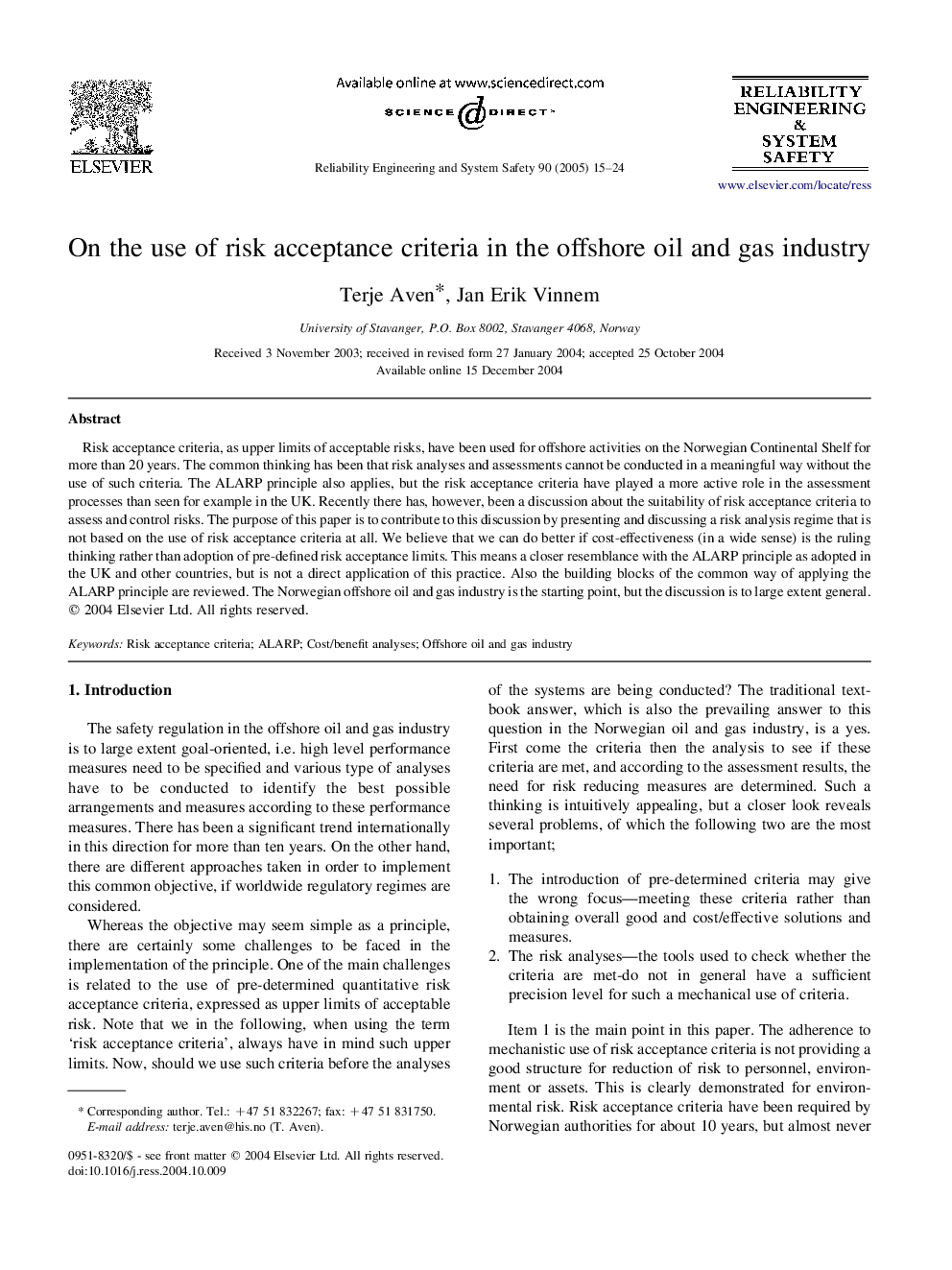| Article ID | Journal | Published Year | Pages | File Type |
|---|---|---|---|---|
| 10419997 | Reliability Engineering & System Safety | 2005 | 10 Pages |
Abstract
Risk acceptance criteria, as upper limits of acceptable risks, have been used for offshore activities on the Norwegian Continental Shelf for more than 20 years. The common thinking has been that risk analyses and assessments cannot be conducted in a meaningful way without the use of such criteria. The ALARP principle also applies, but the risk acceptance criteria have played a more active role in the assessment processes than seen for example in the UK. Recently there has, however, been a discussion about the suitability of risk acceptance criteria to assess and control risks. The purpose of this paper is to contribute to this discussion by presenting and discussing a risk analysis regime that is not based on the use of risk acceptance criteria at all. We believe that we can do better if cost-effectiveness (in a wide sense) is the ruling thinking rather than adoption of pre-defined risk acceptance limits. This means a closer resemblance with the ALARP principle as adopted in the UK and other countries, but is not a direct application of this practice. Also the building blocks of the common way of applying the ALARP principle are reviewed. The Norwegian offshore oil and gas industry is the starting point, but the discussion is to large extent general.
Related Topics
Physical Sciences and Engineering
Engineering
Mechanical Engineering
Authors
Terje Aven, Jan Erik Vinnem,
